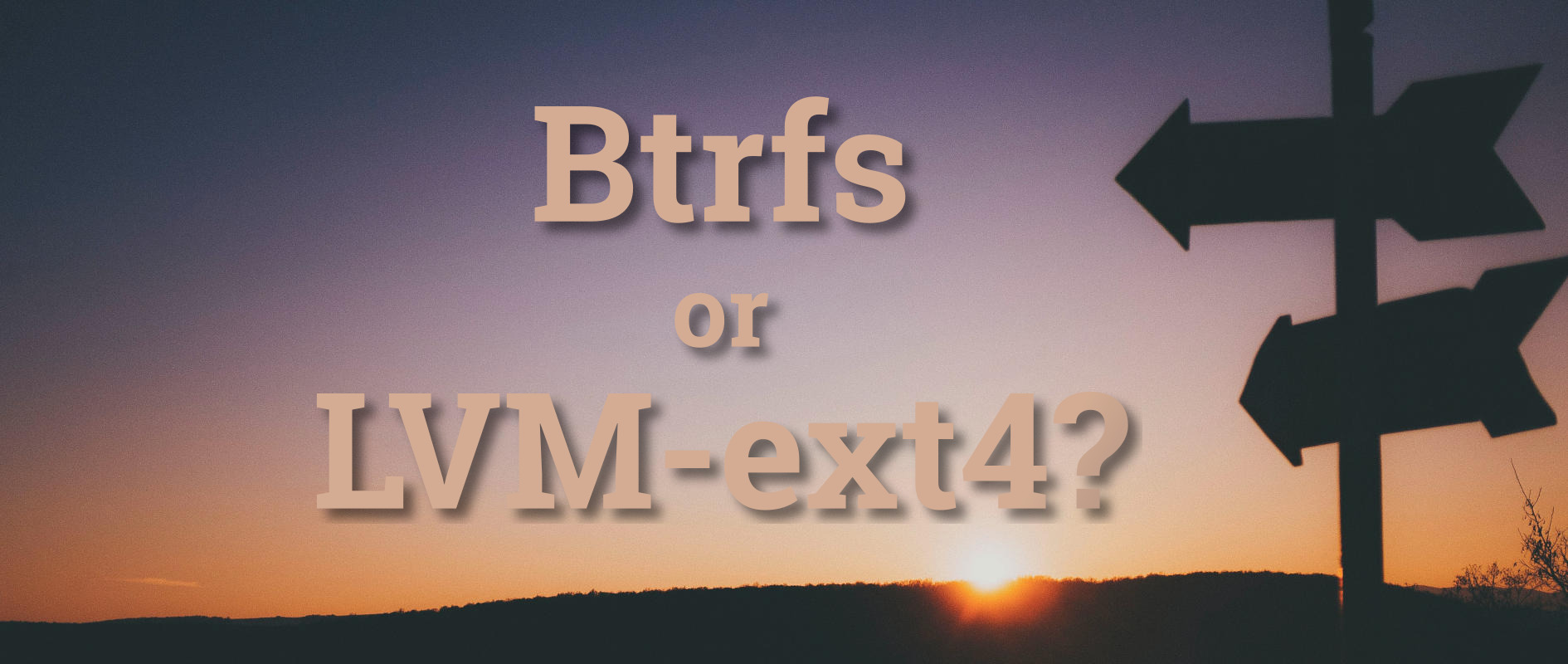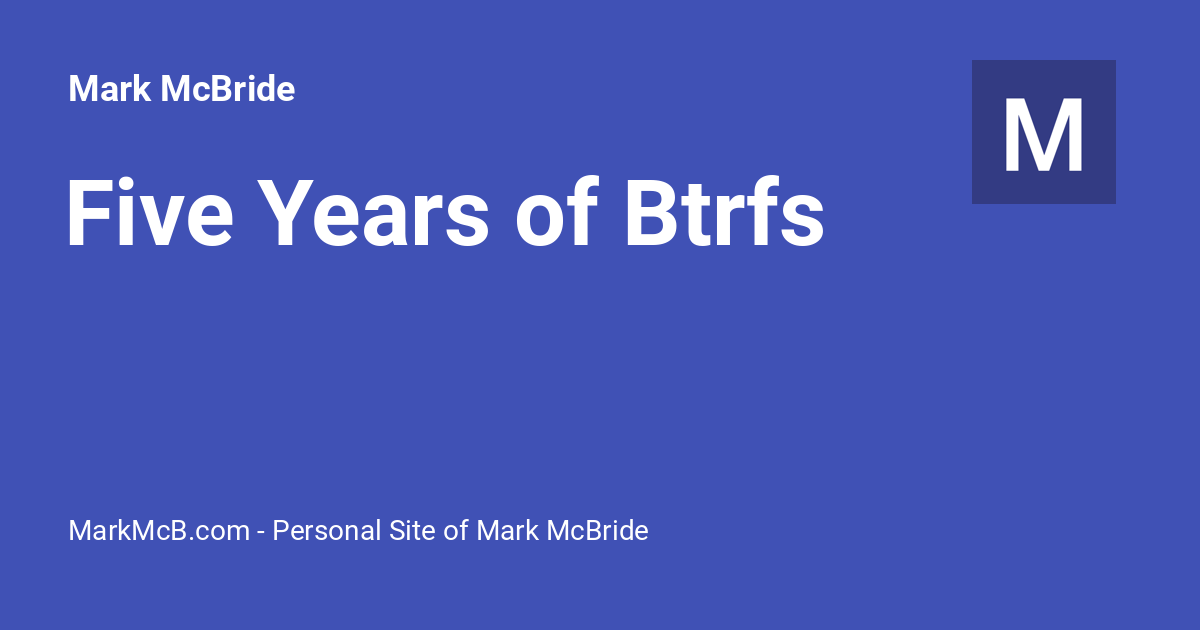Hi everyone! Hope you're all having a nice life! 
I've been recently running and playing with this FS in a couple of VMs with Fedora and OpenSuse. I've read a few blogs and posts and from what I've seen in those VMs it performs pretty well and been considering to make the move from ext4 to brtfs, so thought would ask you my fellow Linuxers, those already using this FS your opinion. Here are a couple of links I find the most interesting:

 fedoramagazine.org
An excerpt:
fedoramagazine.org
An excerpt:
 en.opensuse.org
An excerpt:
en.opensuse.org
An excerpt:
If I understand what I've read so far, BRTFS will create backups of the system regularly without user intervention by taking snapshots, so they don't have/need to install some 3rd party app like Timeshift, luckybackup and the likes to take care of that, is that correct? Or am I missing something there? Again, if I'm understanding that correctly, it is something like WSCS(Windows Shadow Copy Service)which takes care of basically the same thing; taking snapshots of the OS regularly and saving those, so users can restore it to a previous working point when needed, am I getting this right? Thanks in advance to those taking the time to read and answer this. All your input and opinions are much appreciated!
I've been recently running and playing with this FS in a couple of VMs with Fedora and OpenSuse. I've read a few blogs and posts and from what I've seen in those VMs it performs pretty well and been considering to make the move from ext4 to brtfs, so thought would ask you my fellow Linuxers, those already using this FS your opinion. Here are a couple of links I find the most interesting:

Choose between Btrfs and LVM-ext4 - Fedora Magazine
Choose between Btrfs and LVM-ext4 by learning about the next-generation features of Btrfs and the time-tested capabilities of ext4 on LVM.
Key Btrfs features
Perhaps the most important feature is the checksumming of all data. Checksumming, along with copy-on-write, provides the key method of ensuring file system integrity after unexpected power loss. More uniquely, checksumming can detect errors in the data itself. Silent data corruption, sometimes referred to as bitrot, is more common that most people realize. Without active validation, corruption can end up propagating to all available backups. This leaves the user with no valid copies. By transparently checksumming all data, Btrfs is able to immediately detect any such corruption. Enabling the right dup or raid option allows the file system to transparently fix the corruption as well.
SDB:BTRFS - openSUSE Wiki
By default, openSUSE is set up using Btrfs and snapshots for the root partition. Snapshots allow you to easily roll back your system if needed after applying updates, or to back up files.
If I understand what I've read so far, BRTFS will create backups of the system regularly without user intervention by taking snapshots, so they don't have/need to install some 3rd party app like Timeshift, luckybackup and the likes to take care of that, is that correct? Or am I missing something there? Again, if I'm understanding that correctly, it is something like WSCS(Windows Shadow Copy Service)which takes care of basically the same thing; taking snapshots of the OS regularly and saving those, so users can restore it to a previous working point when needed, am I getting this right? Thanks in advance to those taking the time to read and answer this. All your input and opinions are much appreciated!
Last edited:



